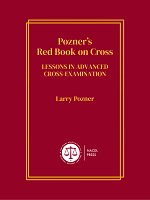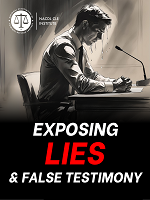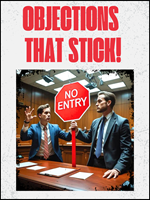- Washington abolished parole in 1984.
- Washington has mandatory LWOP and discretionary JLWOP. See Rev. Code Wash. (ARCW) § 10.95.030 (2012).
- Washington does not have a minimum age at which juveniles may be transferred to criminal court.
State Constitution
Wash. Const. Art. I, § 14 (2012): Excessive bail, fines and punishments
Excessive bail shall not be required, excessive fines imposed, nor cruel punishment inflicted.
NOTE: Article I, Section 14 is broader than the Eighth Amendment.
Sentencing Statutes
- Sentencing Guidelines System –
-
Under Washington’s Sentencing Guidelines system, departures are permitted only for “substantial and compelling” reasons and departures must be explained in writing. A departure is appealable. www.cfc.wa.gov/PublicationSentencing/SentencingManual/Adult_Sentencing_Manual_2011.pdf, page 31.
-
- Proportionality Review for Death Sentences – Rev. Code Wash. § 10.95.100 (2012)
-
§ 10.95.100. Mandatory review of death sentence by supreme court -- Notice -- Transmittal -- Contents of notice -- Jurisdiction
-
Whenever a defendant is sentenced to death, upon entry of the judgment and sentence in the trial court the sentence shall be reviewed on the record by the supreme court of Washington.
-
Within ten days of the entry of a judgment and sentence imposing the death penalty, the clerk of the trial court shall transmit notice thereof to the clerk of the supreme court of Washington and to the parties. The notice shall include the caption of the case, its cause number, the defendant's name, the crime or crimes of which the defendant was convicted, the sentence imposed, the date of entry of judgment and sentence, and the names and addresses of the attorneys for the parties. The notice shall vest with the supreme court of Washington the jurisdiction to review the sentence of death as provided by this chapter. The failure of the clerk of the trial court to transmit the notice as required shall not prevent the supreme court of Washington from conducting the sentence review as provided by chapter 138, Laws of 1981.
-
- Habitual Offender Statutes – Rev. Code Wash. (ARCW) § 9.92.090 (2012)
- § 9.92.090. Habitual criminals
-
Every person convicted in this state of any crime of which fraud or intent to defraud is an element, or of petit larceny, or of any felony, who shall previously have been convicted, whether in this state or elsewhere, of any crime which under the laws of this state would amount to a felony, or who shall previously have been twice convicted, whether in this state or elsewhere, of petit larceny, or of any misdemeanor or gross misdemeanor of which fraud or intent to defraud is an element, shall be adjudged to be an habitual criminal and shall be punished by imprisonment in a state correctional facility for not less than ten years.
-
Every person convicted in this state of any crime of which fraud or intent to defraud is an element, or of petit larceny, or of any felony, who shall previously have been twice convicted, whether in this state or elsewhere, of any crime which under the laws of this state would amount to a felony, or who shall previously have been four times convicted, whether in this state or elsewhere, of petit larceny, or of any misdemeanor or gross misdemeanor of which fraud or intent to defraud is an element, shall be punished by imprisonment in a state correctional facility for life.
-
- § 9.92.090. Habitual criminals
Case Law
General
While a matter may not generally be brought for the first time on appeal, “a party may raise a ‘manifest error affecting a constitutional right’ for the first time on appeal” under RAP 2.5(a). “To be manifest, an error must result in actual prejudice, that is, the asserted error must have had practical and identifiable consequences in the trial of the case.” State v. Davis, 175 Wn.2d 287, 343 (Wash. 2012) (quoting State v. O'Hara, 167 Wn.2d 91, 99 (Wash. 2009).
“‘[T]o determine whether an error is practical and identifiable, the appellate court must place itself in the shoes of the trial court to ascertain whether, given what the trial court knew at that time, the court could have corrected the error.’” State v. Davis, 175 Wn.2d 287, 343 (Wash. 2012) (quoting State v. O'Hara, 167 Wn.2d at 100). “If the trial court could not have foreseen the potential error or the record on appeal does not contain sufficient facts to review the claim, the alleged error is not manifest.” Id.
A trial court is not required to explain why it imposed a particular length of sentence. However, it must explain any exceptional sentence. State v. Mendoza-Espinoza, 1998 Wash. App. LEXIS 1240 (Wash. Ct. App. 1998) (citing State v. Ritchie, 126 Wash. 2d 388, 391 (Wash. 1995)).
In Washington, rehabilitation is secondary to retribution. Wahleithner v. Thompson, 134 Wn. App. 931, 940-942 (Wash. Ct. App. 2006).
State Constitution & Proportionality
Article I, Section 14 of the Washington Constitution is broader than the Eighth Amendment. State v. Manussier, 129 Wn.2d 652 (1996); State v. Davis, 175 Wn.2d 287, 318 (Wash. 2012).
“Especially where the language of our constitution is different from the analogous federal provision, we are not bound to assume the framers intended an identical interpretation. The historical evidence reveals that the framers of Const. art. 1, § 14 were of the view that the word "cruel" sufficiently expressed their intent, and refused to adopt an amendment inserting the word "unusual".” State v. Fain, 94 Wn.2d 387, 392-393 (Wash. 1980).
A punishment violates Article I, Section 14 of the Washington Constitution when it is “grossly disproportionate to the crime for which it is imposed.” State v. Witherspoon, 2012 Wash. App. LEXIS 2449, 35-36 (Wash. Ct. App. Oct. 16, 2012) (citing State v. Flores, 114 Wn. App. 218, 223 (Wash. Ct. App. 2002)
"A punishment is grossly disproportionate only if. . . the punishment is clearly arbitrary and shocking to the sense of justice." State v. Whitfield, 132 Wn. App. 878, 901 (Wash. Ct. App. 2006) (quoting State v. Smith, 93 Wn.2d 329, 344-45 (Wash. 1980)).
A sentence is not disproportionate simply because one judge gave a harsher penalty than another judge might have given: “the question is not the relative leniency in sentencing patterns of individual judges,” but rather the whether the sentence authorized by the legislature is comparable to sentences for similar offenses. Wahleithner v. Thompson, 134 Wn. App. 931, 940-942 (Wash. Ct. App. 2006).
To determine if a punishment is disproportionate under the Washington Constitution, courts look to the four Fain factors: “(1) the nature of the offense; (2) the legislative purpose behind the habitual criminal statute; (3) the punishment defendant would have received in other jurisdictions for the same offense; and (4) the punishment meted out for other offenses in the same jurisdiction.” State v. Fain, 94 Wn.2d 387, 393 (Wash. 1980) (citing Hart v. Coiner, 483 F.2d 136 (4th Cir. 1973)); State v. Magers, 164 Wn.2d 174, 193-194 (Wash. 2008); State v. Rivers, 129 Wn.2d 697, 712-713 (Wash. 1996); see also State v. Manussier, 129 Wn.2d 652, 676-677 (Wash. 1996).
No one Fain factor is dispositive. State v. Witherspoon, 2012 Wash. App. LEXIS 2449, 35-36 (Wash. Ct. App. Oct. 16, 2012) (citing State v. Gimarelli, 105 Wn. App. 370, 380-81, (Wash. Ct. App. 2001).
The fact that an offense is an attempt crime does not diminish its seriousness for purposes of a proportionality analysis. State v. Griffin, 1998 Wash. App. LEXIS 1461 (Wash. Ct. App. 1998).
The legislature may enhance penalties for repeat offenders without violating the Washington Constitution. The state may punish an offender for each separate offense that leads to his designation as a habitual criminal. State v. Fain, 94 Wn.2d 387, 390-391 (Wash. 1980).
The Washington Constitution prohibits the death penalty where the offender is convicted of a single-victim murder. State v. Davis, 175 Wn.2d 287, 318 (Wash. 2012).
When conducting the required proportionality review in death penalty cases, the court’s goal is to ensure that the imposition of the death penalty is not freakish, wanton, random, or based on suspect classifications. The court must consider at least: “(1) the nature of the crime; (2) the aggravating circumstances; (3) the defendant's criminal history; and (4) the defendant's personal history, as well as any additional substantive challenges to the proportionality of the sentence.” State v. Davis, 175 Wn.2d 287, 347 (Wash. 2012) (quoting State v. Cross, 156 Wn.2d 580, 630-31 (2006)).
The following cases mention both Article I, Section 14 and the Eighth Amendment, but do not provide any unique, significant analysis:
- State v. Thorne, 2010 Wash. App. LEXIS 1647 (Wash. Ct. App. 2010) –
- State v. Bremer, 2009 Wash. App. LEXIS 1082 (Wash. Ct. App. 2009) –
- State v. Grenning, 142 Wn. App. 518 (Wash. Ct. App. 2008) –
- State v. Borunda, 2006 Wash. App. LEXIS 1304 (Wash. Ct. App. 2006) –
- State v. Peters, 2004 Wash. App. LEXIS 331 (Wash. Ct. App. 2004) –
- State v. Hammond, 2001 Wash. App. LEXIS 560 (Wash. Ct. App. 2001) –
- State v. Gimarelli, 105 Wn. App. 370 (Wash. Ct. App. 2001) –
- State v. Morin, 100 Wn. App. 25, 28 (Wash. Ct. App. 2000) –
- State v. Hoggatt, 1999 Wash. App. LEXIS 288 (Wash. Ct. App. 1999) –
Leading Court Discussions of Graham and Miller
State v. Witherspoon, 329 P.3d 888 (Wash. July 17, 2014) (Graham and Miller are based on the difference between adults and juveniles so they are not applicable to adults.)
In re Thomas, 330 P.3d 158 (Wash. July 17, 2014) (LWOP is not categorically barred by Miller)













